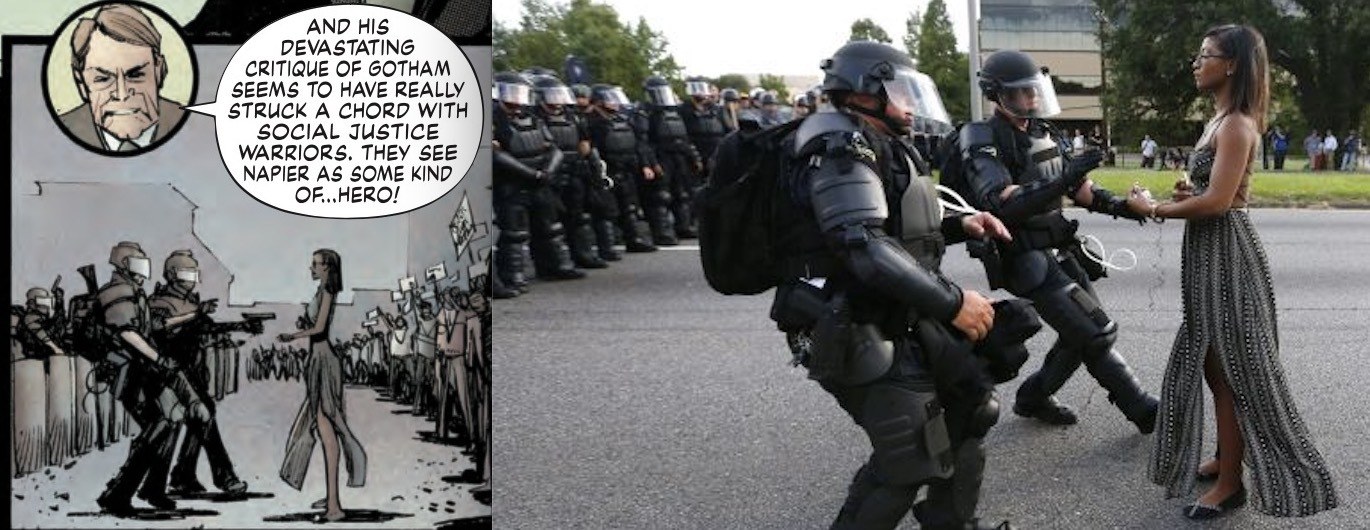Writer: Sean Murphy / Artist: Sean Murphy / DC Comics
So much Batman, so little time. With the arrival of ‘Metal’ there are more than half a dozen Batman-specific titles currently from DC, from Batman: The Red Death to Batman: The Drowned and this week’s new arrival, Batman: The Devastator. Here we have Batman: White Night, separate from ‘Metal,’ but a type of alternate history altogether where Batman has gone too far the Joker is the Gotham’s savior – their White Night opposite the dark one – a switching of roles between the franchise’s two most iconic characters. If the premise weren’t intriguing itself, the execution has you covered. Batman: White Knight is off to an intriguing start, with both notable highs.
To set the scene, the Joker – or Jack Napier – is cured. Newly sane, Napier has the sympathy of the people of Gotham and capitalizes on their distrust of local government and outrage against police brutality and corruption. If it’s a little too close to home for you, one might understand the concern – it’s a tricky line to dance, commenting on today’s racial climate without trivializing it. The main success of Batman: White Knight is setting the narrative the way we have always viewed Batman as a crazy person, unhinged, cracking down on the symptom crime with disregard for its underlying causes, vigilantism that is, while fun in comics, horrible when applied to real society. Thematically, the result is a Batman rendition of the Frank Grimes episode of The Simpsons, in a way: what if you made a realistic character and introduced them to the traditional, unrealistic world of our main character? Except here, Gotham becomes the realistic character that applies real-life thought to Batman. Comments of the 1% and the ghettos of Gotham are on the safe side of line, though this issue squares a few scenes too closely on the nose in a way that’s heavy handed at best and distasteful at worst. Depending your perspective, the Black Lives Matter imagery is either paying homage or simply regrettable.
The series loses a bit of its potential with the addition of Napier’s new accomplices: a power move that happens all too easily, which also washes away the ability for a sympathetic reader to better sympathize with a reformed Joker. Indeed, the issue undermines its most interesting premise showing Napier operate as underhanded as the Joker.
Artistically, the pages are dark and the panels fast, and Murphy pulls the emotional tone of each scene with the angles chosen and expressive faces. The artwork will definitely keep you engaged, even without the caped crusader or extended action scenes.
Overall, some bumps along the road might keep you cautious, but optimistic nonetheless. Four more issues to complete the book, and with such a short series, one more will likely point us in our ultimate direction.
Reading Batman: White Knight? Find BNP’s other reviews of the series here.
Are you following Black Nerd Problems on Twitter, Facebook, Tumblr or Google+?





Show Comments